You have 0 product(s) in your cart.
Abyss Scuba Diving
What Is The Ideal Weight For Freediving?

What Is the Ideal Weight for Freediving?
Freediving is a thrilling yet challenging sport, pushing the limits of physical and mental human endurance. One critical aspect that can make or break a freedive is determining the ideal weight for freediving. Why? Because the right balance between your body and the underwater environment can mean the difference between a comfortable, efficient dive and a struggle against buoyancy forces. Isn’t it interesting? Let’s dive deeper.
Short Summary
-
Calculate the ideal freediving weight using a calculator and fine-tune it based on experiences in the water.
-
Choose appropriate rubber weight belts or neck weights for the preferred discipline, considering environmental conditions.
-
Keep a logbook of dives and prioritize safety to ensure a successful & safe experience.
Determining Your Ideal Freediving Weight
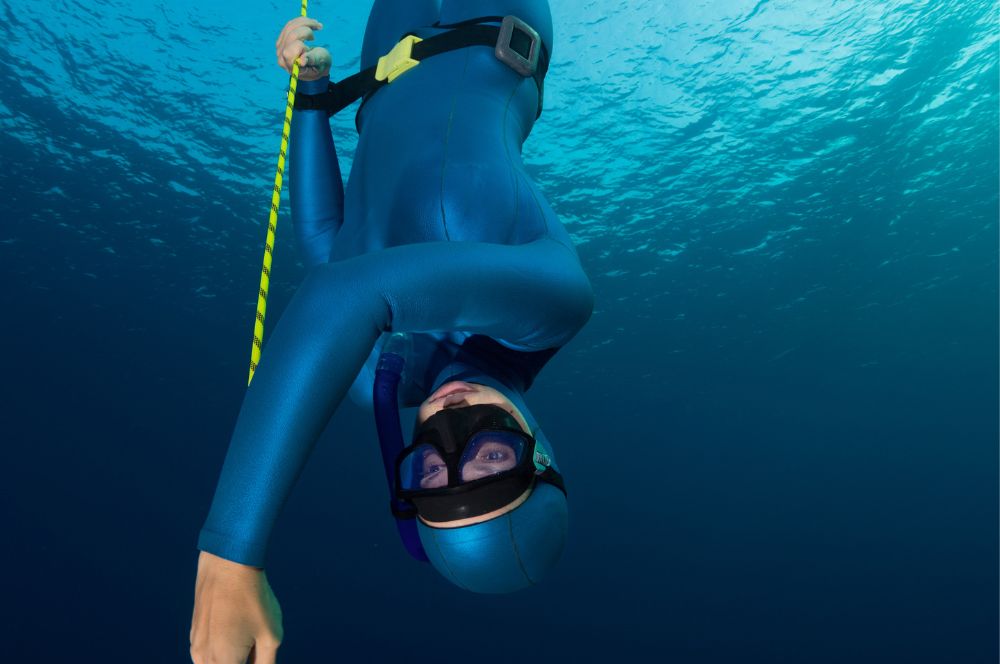
Have you ever wondered why you float in the Dead Sea? Or why it’s harder to swim in a freshwater lake compared to the ocean? It all comes down to buoyancy, a force opposed by gravity, keeping you afloat. For freedivers, achieving neutral buoyancy is the Holy Grail, where you neither sink nor float.
Determining the ideal weight for freediving isn’t just about making your dives more comfortable - it’s a matter of safety too. Factors like body composition, wetsuit thickness, and the type of water you’re diving in all play a vital role in this equation. Achieving the correct weighting is a bit like Goldilocks finding the just-right porridge. Too much or too little can have serious repercussions.
But how do you know how much weight you should carry? The answer lies in conducting a series of buoyancy tests, starting with a limited amount of weight and making adjustments as necessary. This process may seem daunting, but fret not! We’re here to guide you through it.
Body Composition and Buoyancy
Your body composition, the proportion of fat to muscle and bone, is a primary factor affecting your buoyancy. Bone and muscle density plays a significant role in this, as muscle and bone are negatively buoyant - they sink, while fat is positively buoyant - it floats. This is why women, who generally have a higher body fat percentage compared to men, may require a different weight setup.
But it’s not just about the amount of fat or muscle you have. Changes in your body weight can also affect your buoyancy. If you lose weight, you might find yourself more buoyant than before, requiring more weight to achieve neutral buoyancy at your desired depth. Conversely, you might need to shed some weight from your belt if you gain weight. That’s why competitive freedivers aim for neutral buoyancy at a depth of 10m, which may require varying weight adjustments depending on the individual’s body composition and other factors.
Wetsuit Thickness and Its Effects on Weight
Diving into the depths of the ocean in your swimsuit might make for an invigorating experience, but it’s not exactly practical or safe. That’s where your wetsuit comes in. But did you know that the thickness of your wetsuit can affect your buoyancy? The thicker your wetsuit, the more buoyant it is, thanks to the air bubbles trapped inside the neoprene material.
So, if you’re diving in colder waters and need a thicker wetsuit, you’ll need to add more weight to achieve neutral buoyancy. For example, for a 3mm thick wetsuit, adding approximately 5kg of weight to your weighting system is recommended. But remember, these are just guidelines. Factors like your body composition and other equipment can also affect the amount of weight you need.
Saltwater vs. Freshwater
Whether diving in the crystal-clear waters of the Great Barrier Reef or the freshwater lakes of in the Snowy Mountains, the type of water you’re diving in can significantly affect your buoyancy. Saltwater is more buoyant than fresh water because it’s denser due to the salt dissolved in it.
So, what does this mean for your freediving weight? In a nutshell, you’ll need more weight to achieve neutral buoyancy in saltwater compared to freshwater. However, it’s also essential to consider other factors, such as water temperature and your equipment, which can also impact your buoyancy.
Calculating Your Freediving Weight
Now that you know the factors that affect your buoyancy, it’s time to calculate your ideal freediving weight. This might seem like a daunting task, but don’t worry - there are tools and techniques available to help you out. One of the most common methods is using a weight calculator as a starting point and then fine-tuning your weight based on your experiences in the water.
It’s crucial to remember that these calculators are just a guide. Your body is unique, and so are the conditions you’ll be diving in. Thus, it’s essential to test your weight in the water and make small incremental adjustments as needed. Regularly testing your buoyancy is also important. Changes in body weight, new gear, or even diving in a different body of water can affect your buoyancy, requiring adjustments to your weight.
Now let’s look at each of these in more detail.
Using a Weight Calculator
A weight calculator can provide a good starting point for determining the amount of weight you need for freediving. These calculators typically take into account factors like wetsuit thickness and body size. For example, you might start with 1 kg (2.2 lbs) of weight for each millimetre of your wetsuit’s thickness and then add an additional 2 kg if you are lean or 2.5 kg if you are of a larger build. You may also consider adding an extra half-kilo weight for fine-tuning your buoyancy.
But remember, this is just a starting point. The real test comes when you get into the water. That’s why it’s important to use the weight calculator as a reference point and then make minor adjustments based on your experiences in the water to achieve neutral buoyancy.
Fine-Tuning Your Weight
After using a weight calculator to get a rough estimate, the next step is to fine-tune your weight. This involves getting into the water and making small incremental adjustments to your weight until you achieve neutral buoyancy at your desired depth.
This is a crucial step because it allows you to customize your weight based on your unique body composition and the specific conditions you’ll be diving in. For example, you might find that you need slightly more or less weight than the weight calculator suggested. By fine-tuning your weight, you can ensure that you carry the optimal weight for your dive.
Regularly Testing Your Buoyancy
Just as you wouldn’t wear the same outfit in summer as you would in winter, the amount of weight you need for freediving can change based on a variety of factors. That’s why it’s important to test your buoyancy regularly.
Changes in body weight, new gear, or even diving in a different body of water can all affect your buoyancy, requiring adjustments to your weight. By regularly testing your buoyancy, you can ensure that you’re always carrying the optimal amount of weight for your dive.
Freediving Weight Systems
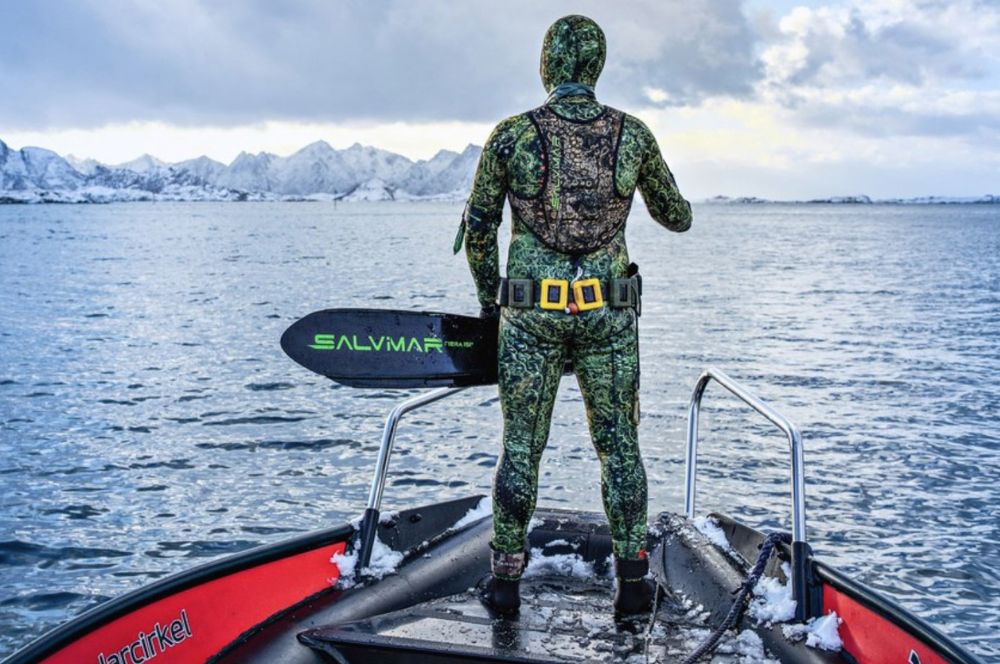
Once you’ve calculated your ideal weight, the next step is to decide on a weight system. There are several options available, but the most common are rubber weight belts and neck weights. Many freedivers prefer rubber weight belts because they provide stability, stretchiness, and even weight distribution. However, they’re more delicate and expensive compared to other options. On the other hand, neck weights can improve freefall and streamline your body, but they require strong neck muscles for support.
Choosing the right weight system depends on your personal preferences, the freediving discipline you’re practising, and the specific conditions you’ll be diving in. Let’s delve deeper into each of these weight systems.
Rubber Weight Belts
Rubber weight belts are popular among freedivers, but some may also consider a nylon belt for their needs. A rubber weight belt provides a comfortable fit and allows for unrestricted breathing and movement thanks to its elasticity. This makes it ideal for achieving neutral buoyancy and enhancing your freediving experience, especially when using surface rubber weight belts.
However, it’s worth noting that rubber weight belts do require a bit more care compared to other weight systems. They’re more delicate and can be damaged if not properly cared for. Despite this, many freedivers find that the benefits of rubber weight belts far outweigh these minor inconveniences.
Neck Weights
Neck weights provide optimal weight distribution and are highly efficient in improving freefall and streamlining your body. They can be particularly beneficial in disciplines like dynamic apnea, where maintaining a horizontal position is key.
While neck weights offer many benefits, they come with their own set of challenges. They require strong neck muscles and can increase the difficulty of the dive. They are also more cumbersome to use than a harness or belt. Despite these challenges, many freedivers find that the benefits of neck weights make them a worthwhile addition to their gear.
Weighting Tips for Different Freediving Disciplines
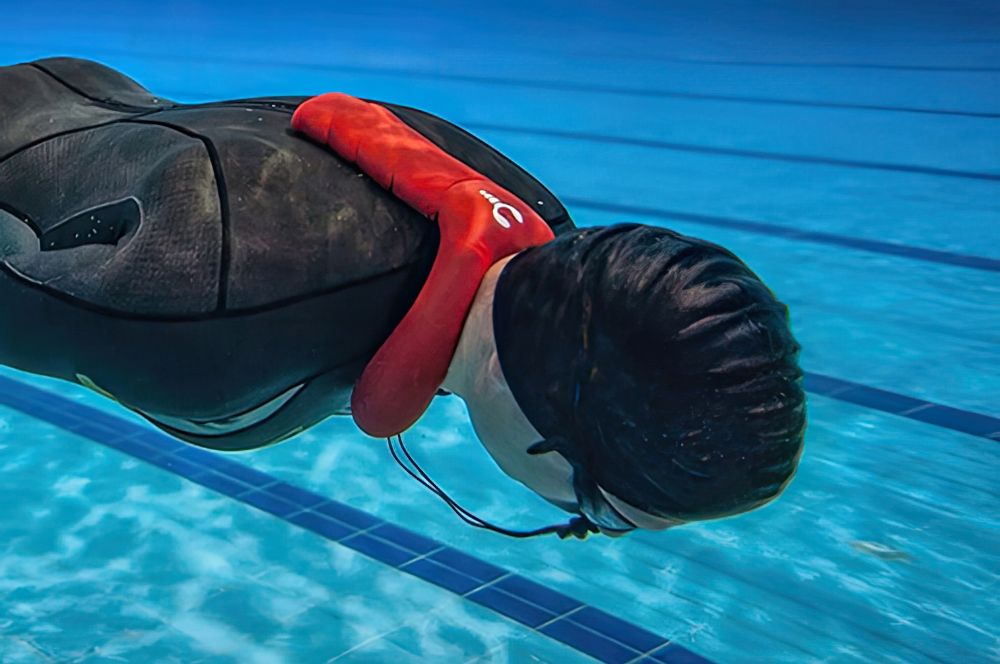
Different freediving disciplines have different weighting requirements. Whether you’re practising static apnea, dynamic apnea, or constant weight freediving, understanding the unique weighting considerations of each discipline can help you achieve your best performance. In static apnea, for example, weights are prohibited, and the body must remain buoyant at the surface. In contrast, dynamic apnea weighting depends on body buoyancy, with women typically using weight belts and men using neck weights. Constant weight freediving, on the other hand, requires neutral buoyancy at a specific depth. The diver must calculate their weight accordingly to ensure safe ascents and descents. Let’s look at each of these in more detail.
Static Apnea
In static apnea, the objective is to hold your breath for as long as possible while floating on the surface. As such, weights are not necessary. However, this doesn’t mean that weight doesn’t matter in static apnea. The ideal weight for static apnea varies depending on factors such as the individual’s body composition, wetsuit thickness, and experience level. It’s important to find a balance that allows you to remain comfortably buoyant at the surface without struggling to stay submerged.
Dynamic Apnea
Dynamic apnea is all about balance and equilibrium. The goal is to navigate and glide underwater without sinking to the bottom or rising to the surface. When it comes to weight for dynamic apnea, body buoyancy plays a significant role. Women typically use weight belts, while men prefer neck weights. The key is finding the right amount of weight to achieve neutral buoyancy and glide effortlessly underwater.
Constant Weight Freediving
Constant weight freediving is a discipline where the diver descends and ascends with the same weight. This requires the diver to maintain neutral buoyancy at the desired depth and calculate the weight they carry accordingly to ensure safe ascents and descents.
In constant weight freediving, it’s recommended to use lead weights in the 0.5-1 kg/1-2 lb range. This range of weight will provide a more streamlined freediving experience, reduce effort, and extend bottom time.
Consequences of Incorrect Weighting
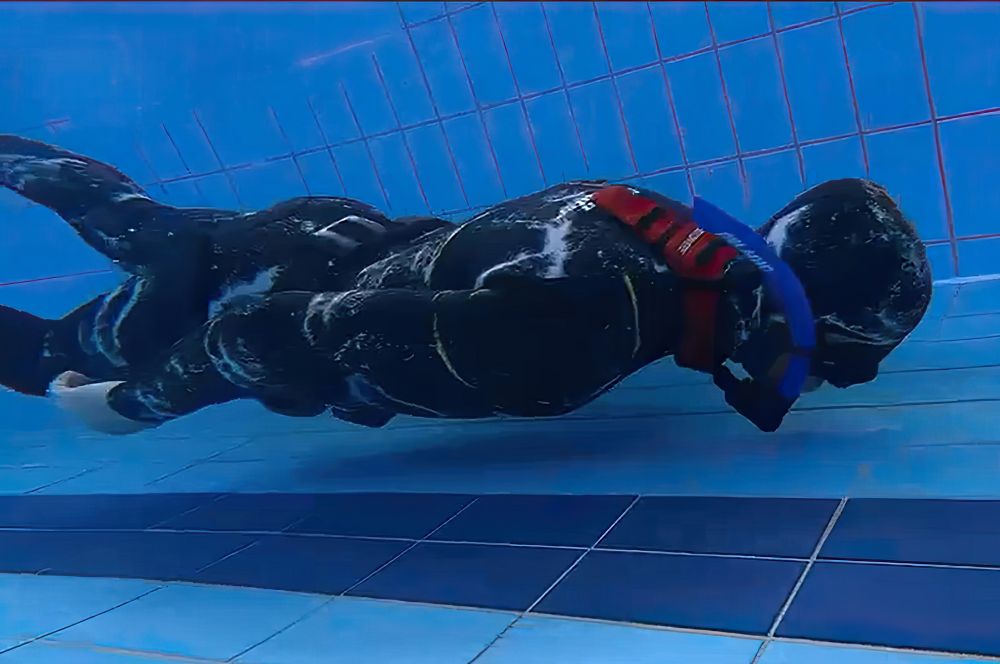
While determining the optimal weight for freediving can be complex, the consequences of getting it wrong can be severe. Incorrect weighting can lead to both insufficient weight and excessive weight, each with its own set of dangers. Insufficient weight can limit your dive depth, increase your oxygen consumption, and lead to higher energy use. On the other hand, excessive weight can cause negative buoyancy, leading to oxygen and energy depletion, blackouts, and sinking to the bottom.
In the end, the most important thing is to prioritize safety. Regularly testing your buoyancy, making small adjustments as needed, and always diving within your limits can help ensure a safe and enjoyable freediving experience.
Insufficient Weight
Insufficient weight in freediving can lead to a host of problems. It can limit your dive depth, increase your oxygen consumption, and lead to higher energy use. However, the positive buoyancy caused by insufficient weight can be beneficial in emergency scenarios when a rapid ascent is necessary.
But remember, the goal of freediving isn’t just to stay afloat. The aim is to achieve neutral buoyancy, where you can comfortably remain at a certain depth without sinking or floating. This can only be achieved with the right amount of weight.
Excessive Weight
On the other end of the spectrum, having too much weight can also be problematic. Excessive weight can result in negative buoyancy, making it harder for you to ascend. This can lead to oxygen and energy depletion, blackouts, and even sinking to the bottom.
Finding the right balance is key. You don’t want to be too heavy that you sink like a stone, but you also don’t want to be so light that you’re constantly fighting to stay submerged. Remember, safety should always be your top priority when freediving.
Keeping a Logbook and Prioritizing Safety
As you can see, determining the ideal weight for freediving is not a one-size-fits-all task. It’s a dynamic process that requires constant adjustments and fine-tuning. That’s why it’s important to keep a detailed logbook of your dives, noting down the conditions, the equipment you used, and the amount of weight you carried. This can help you track your progress and make more informed decisions about your weight in the future.
More importantly, always prioritize safety. Consider the limits of your diving buddy, regularly test your buoyancy, and never dive alone. Remember, freediving is not just about pushing your limits - it’s about respecting the ocean and your own body.
Summary
Finding the ideal weight for freediving is a complex process that requires a clear understanding of various factors, including your body composition, wetsuit thickness, and the type of water you’re diving in. It also requires understanding different freediving disciplines and their unique weighting considerations.
However, the rewards are worth the effort. Achieving the correct weighting enhances your performance and ensures your safety during the dive. So, whether you’re a seasoned freediver or a beginner, we hope this guide has provided you with valuable insights to help you on your freediving journey.
Frequently Asked Questions
What is the recommended weight for diving?
For a 5mm wetsuit, your recommended weight for diving is typically around 10% of your body weight minus 4-6 pounds.
How do you calculate free diving weights?
To calculate free diving weights, use 1 kg for every millimetre of wetsuit thickness and 2kg extra for 5 kg per 80 kg of body weight.
This will help you achieve neutral buoyancy and make your dives more comfortable and enjoyable.
Why is body composition essential in determining the ideal weight for freediving?
Body composition plays a crucial role in determining the optimal weight for freediving, as it directly influences your buoyancy. Achieving neutral buoyancy requires careful consideration of factors such as lung capacity, body fat and muscle mass, as well as water density. More air in your lungs increases buoyancy, while a higher percentage of body fat also contributes to buoyancy.
How does the thickness of my wetsuit affect my weight in freediving?
The thickness of your wetsuit affects your weight in freediving by creating more buoyancy, meaning you’ll need more weight to achieve neutral buoyancy.
RELATED POSTS
-
Take a Freediving Course: Learn to…
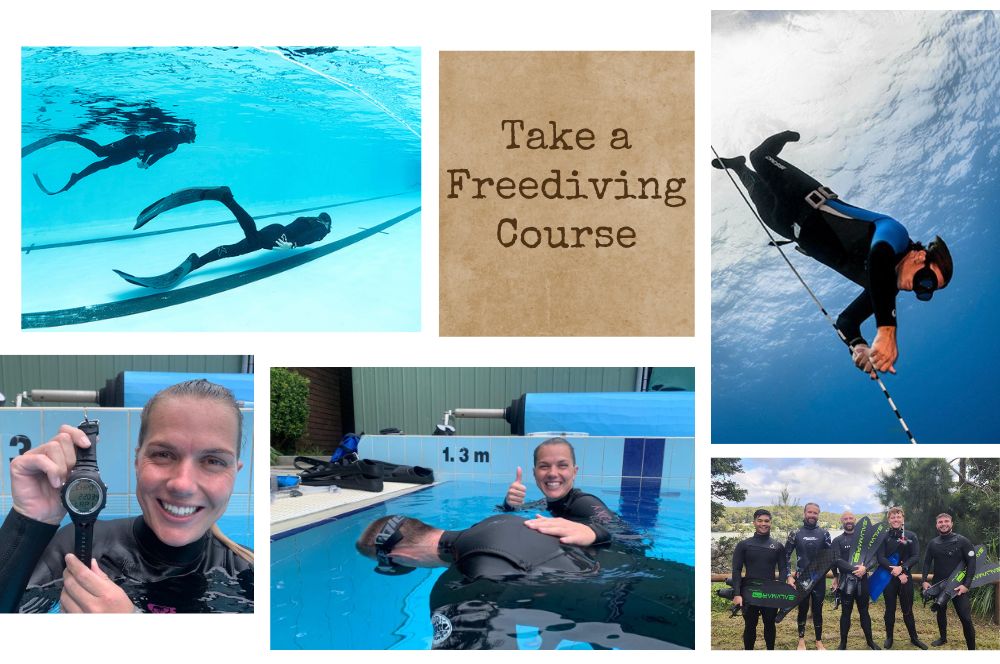
Take a Freediving Course:…
Take a Freediving Course: Learn to Dive Deeper than Ever Before Have you ever dreamed of gliding effortlessly […] -
Safety First: Essential Tips for Freediving
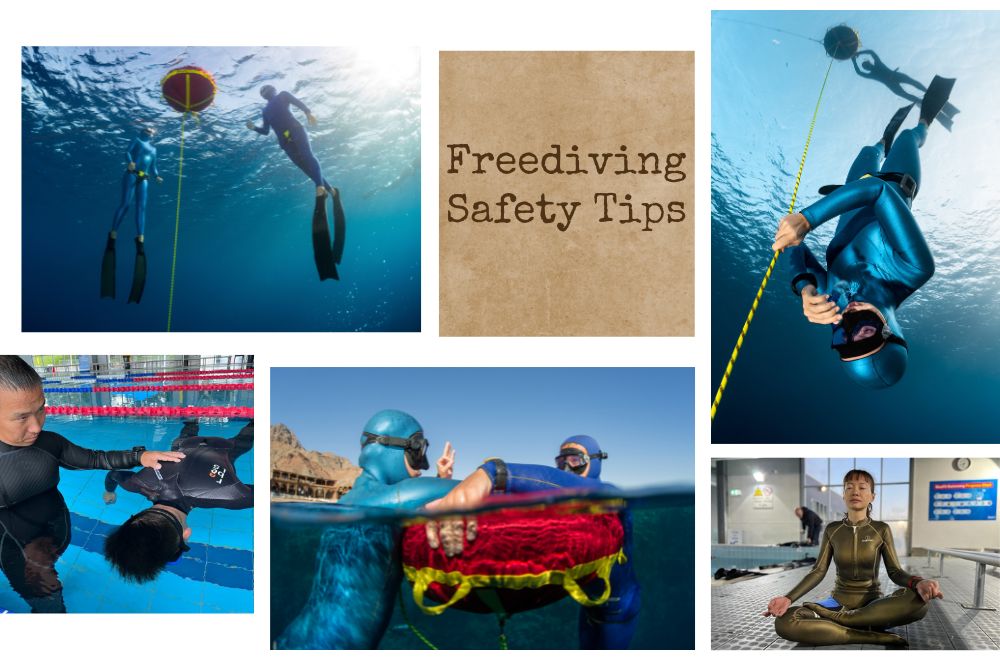
Safety First: Essential…
Safety First: Essential Tips for Freediving Freediving is an exciting activity that challenges the limits […] -
Dive Deeper: Choosing Your Perfect…
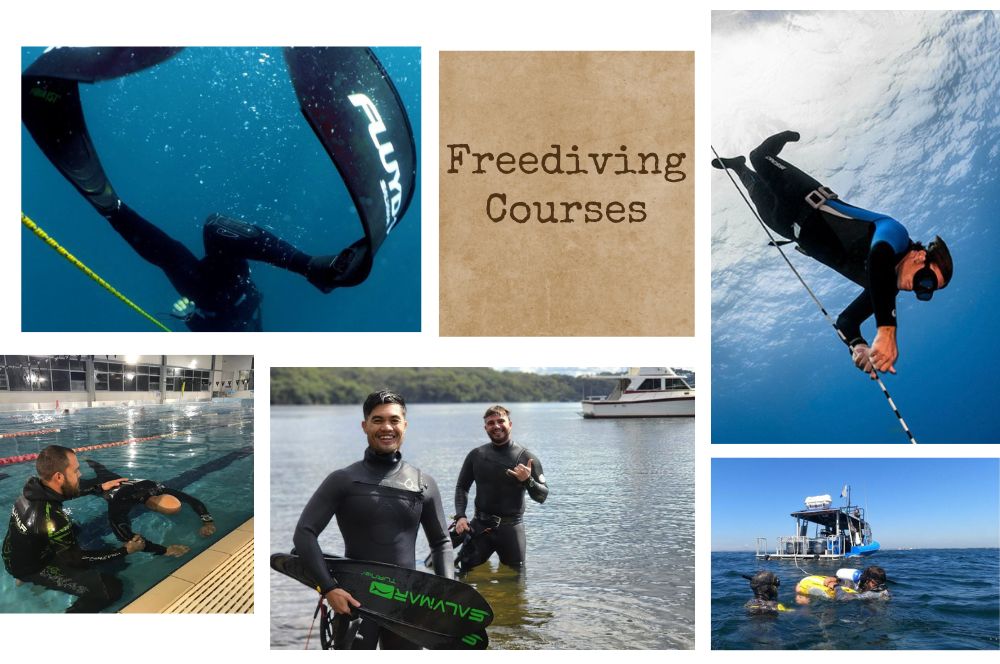
Dive Deeper: Choosing…
Dive Deeper: Choosing Your Perfect Sydney Freediving Course The vibrant city of Sydney has become a […] -
Expanding Horizons: Try to Freediving…

Expanding Horizons:…
Expanding Your Horizons: Transitioning from Scuba to Freediving in Sydney Are you a scuba diver looking for […]
Recent Posts





